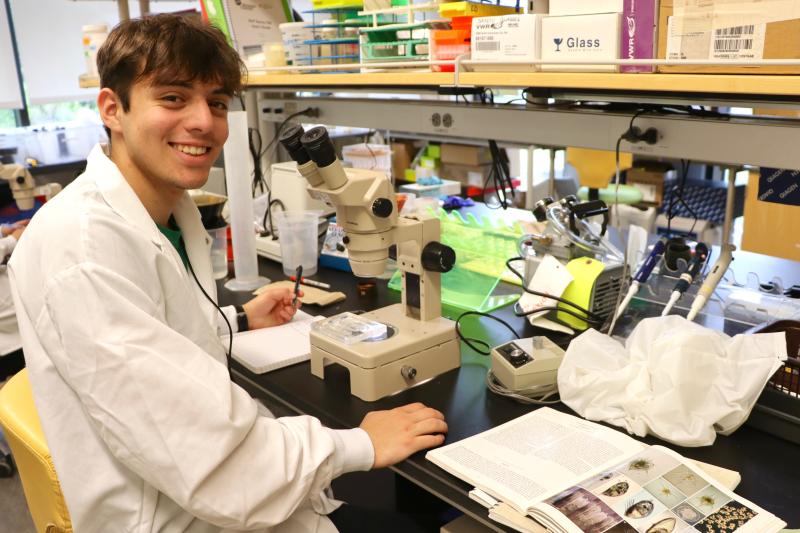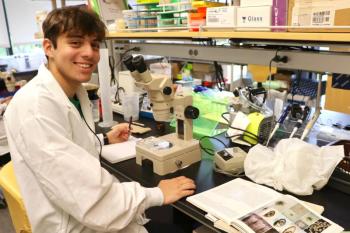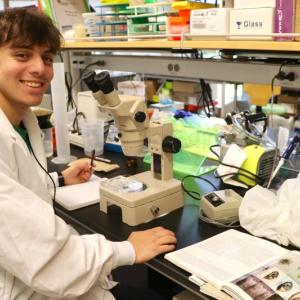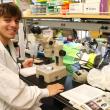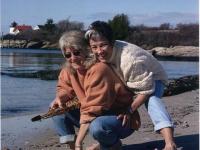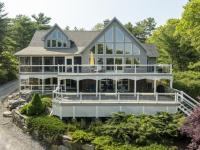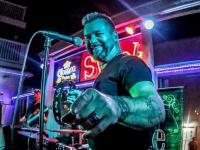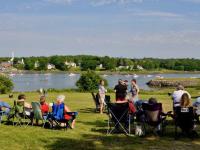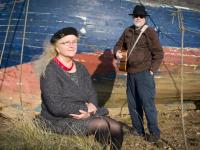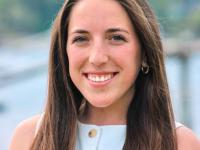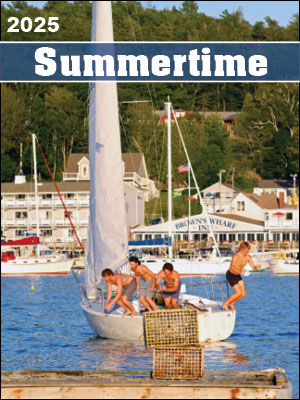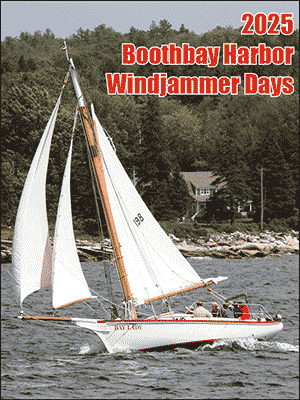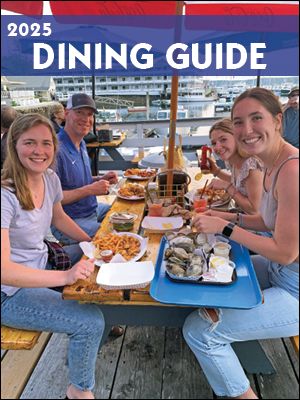Diving into marine science
This May, Boothbay Region High School student Dominick Dow found out what life is like as a marine scientist. Dow, alongside 15 other Maine juniors, participated in Bigelow Laboratory’s annual immersive science program at Bigelow’s campus in East Boothbay.
The Keller BLOOM Program provides students the opportunity, at no cost, to spend a week in residence at the lab's waterfront campus. They worked alongside scientists to learn about microbiology in the local marine environment and explore a career in research.
At school, Dow said he enjoys trigonometry and biology. He said his science teachers encouraged him to apply to the program, and it has been a good learning experience.
“I feel like I want to put more effort into science than my other classes,” he said. “To learn about what's in the ocean, how it works, everything like that – It's been fun so far.”
During the program, students are immersed in hands-on research and explore what a career as a scientist involves. They even learn how to sample water during a research cruise in the Sheepscot River estuary.
Students take their collected samples and work with scientists using laboratory instruments to study microscopic plants, animals, bacteria and other organisms from the local marine environment.
"I like the ocean, but I didn't realize how many small creatures there are until now. Even when you just pull out a pail of water you can still see so many visible organisms in there,” Dow said.
BLOOM stands for “Bigelow Laboratory Orders Of Magnitude.” The name refers to how students explore the ways small marine organisms have big impacts, even on global scales.
Tiny organisms, such as phytoplankton, are the foundation for many ocean processes, according to scientist and BLOOM Director Nicole Poulton. “One of the things we try to convey to our students is that a lot of the things, just in how the whole climate functions and how we function on the planet, are all due to organisms that you cannot see with the naked eye,” she said.
The program’s lessons go well alongside his classes at BRHS, Dow said. In school, he learns what different organisms and biological processes are. During the program, he learned how they function in ecological systems.
"Some of it's kind of hard to understand, but it's really good,” Dow said. “We’re learning about how big of an impact that the small things in our ocean really have: bacteria, phytoplankton and even nutrients in chloroplasts, the stuff that helps photosynthesis, are really helpful to our entire environment."
The program is also a chance for students to stop worrying about good grades and correct answers and focus on the scientific process, according to Poulton.
“Science is really unknown; you go in with a hypothesis and you don't know what your answer is going to be,” she said. “What we are trying to do here is give students, at a very early age, a sense of what it’s really like in the life of a scientist ... We go out on the water with the students, and they collect all this data, and they may or may not have acquired the actual answers.”
David Fields, another scientist at Bigelow Laboratory, helps run the BLOOM program. He said the ocean is underrepresented in the classroom because inland students mostly learn about ecology through terrestrial examples, such as trees.
“Even though we are considered to be a coastal state, some of them never see anything happening in the ocean or understand the scale of economy that it brings to the state,” he said. The program is a chance to expose students to the importance of marine processes. Fields added, it also has value for students in coastal communities. He said there are many job opportunities besides commercial fishing, and he wants students to see Maine’s range of career possibilities. “Lincoln County is both a hub for science and working waterfronts,” he said. "To keep our young talent here, they can (pursue) a whole bunch of different avenues, and I think science is a great opportunity for students to come back to Maine to work.”
Many of the students who join the program already know they want to be scientists. However, it is not just designed for them.
Dow, for example, is not sure a career in science is right for him. Although he participated in BLOOM, he said he likely wants to join the Air Force. He said he is interested in engineering or another career around aviation, but the program is a great way to see what else may be out there.
That is part of the point, Poulton said. “I feel the program is successful whether or not they go into a career in science because our goal is not to get them into a career in science, it is finding out whether this is a career path that they would like or enjoy.”

